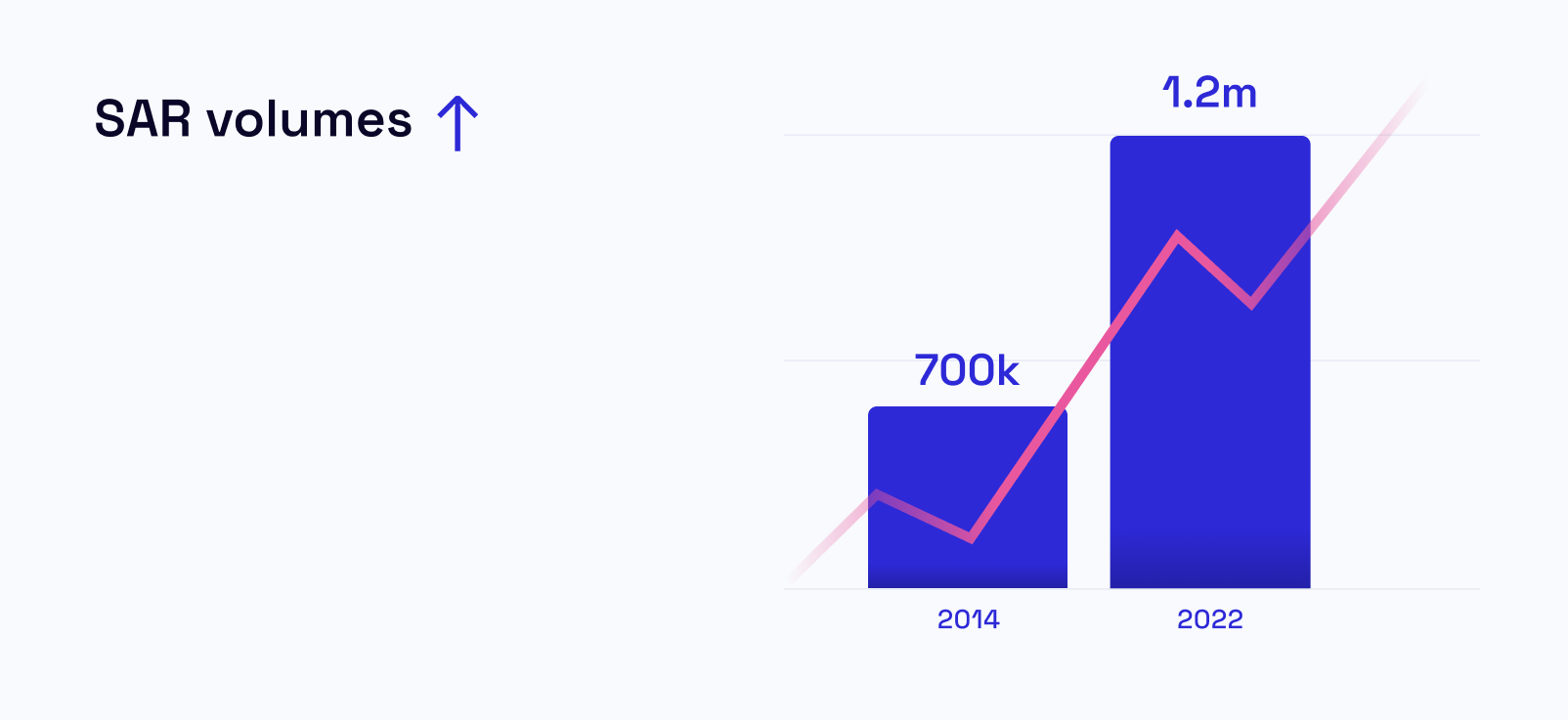Traditionally 30% of a bank or financial institution's workforce is dedicated to compliance. This is because the processes are manual and batch based. We can automate these processes and make them real-time with machine learning.
The Importance of BSA/AML Compliance and SAR filing
One of the primary compliance requirements of any financial institution or regulated payments businesses is Bank Secrecy Act and Anti-Money Laundering Compliance (commonly known as BSA/AML compliance). These laws require institutions to perform various checks, activities and processes to identify and report economic crimes like money laundering to law enforcement.
The reporting mechanism is called a Suspicious Activity Report (SAR)
🐟 Fun fishy fact: SAR filing is where the SAR in Sardine comes from.
SAR rules require a SAR to be filed no later than 30 calendar days from the date of the "initial detection of facts that may constitute a basis for filing a SAR." Anyone with SAR requirements may file SARs for continuing activity after a 90-day review, with the filing deadline being 120 days after the previously related SAR filing date.
The traditional approach is being overwhelmed
When many transaction monitoring systems and processes were created, payment systems were batch-based, and the volume of SARs was much lower.

Over the past two decades, the volume of SAR filing has increased dramatically. FinCEN data shows that Money Service Businesses (MSBs, like Fintech companies and eCommerce merchants) SAR volumes have increased from 700,000 per year in 2014 to 1.2m in 2022. With the heightened focus on Sanctions following Russia’s invasion of Ukraine, these numbers are set to increase further.
Payments are increasingly becoming Real-Time and span multiple payment types like Fintech Wallets, bank accounts, and Crypto. With the FedNow launch in July 2023, this trend will continue. The job of a compliance officer to raise accurate SARs with complete facts can be delayed or complicated by batch systems that can’t give a complete picture of activity.
Delays in identifying suspicious activity can quickly overwhelm the already overworked compliance teams.
Real-time Transaction Monitoring means more timely SARs
I firmly believe in lowering manual work fraud, which compliance teams must do by using AI and machine learning upfront. The software can review transactions in real-time with a machine learned score.
This data can be brought into a Network Graph to help investigations and follow activity across multiple payment rails such as RTP, card, or Crypto. Giving compliance officers everything they need to complete a SAR.
This way, compliance officers spend less time manually reviewing transactions and more time identifying patterns like the structure, layering, and placement of crime proceeds.
This saves time
It saves cost
Machine Learned Transaction Monitoring means less friction
A batch-based transaction monitoring system may hold a user's transaction for manual review despite it being very low risk or the type of transaction consistently approved by a compliance officer.
These false positives create friction and frustration for users and compliance officers. A real-time machine learning system can automate many low-risk approvals and continually adjust over time as new threats emerge.
Get Started with Real-Time
In the age of AI human is still the critical defense and decision maker when it comes to complex AML cases and SAR creation.
However, with Sardine’s Machine Learning and Real-Time transaction monitoring, they can spend more time managing complex cases and less time performing dull, repetitive tasks.
If you want to learn more.
File more timely SARs with SARdine.
